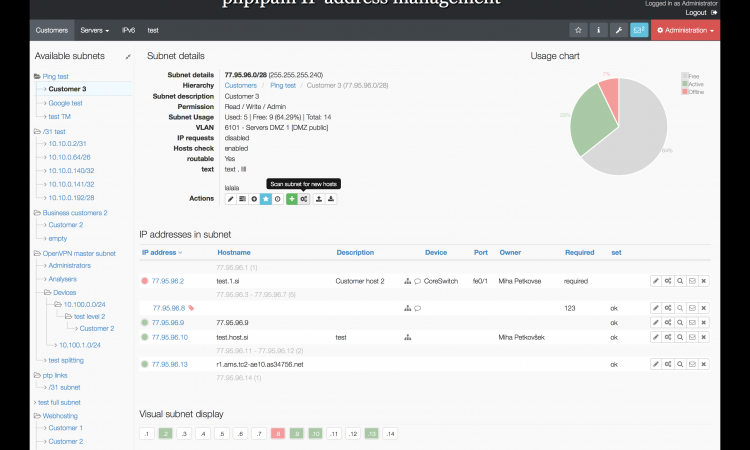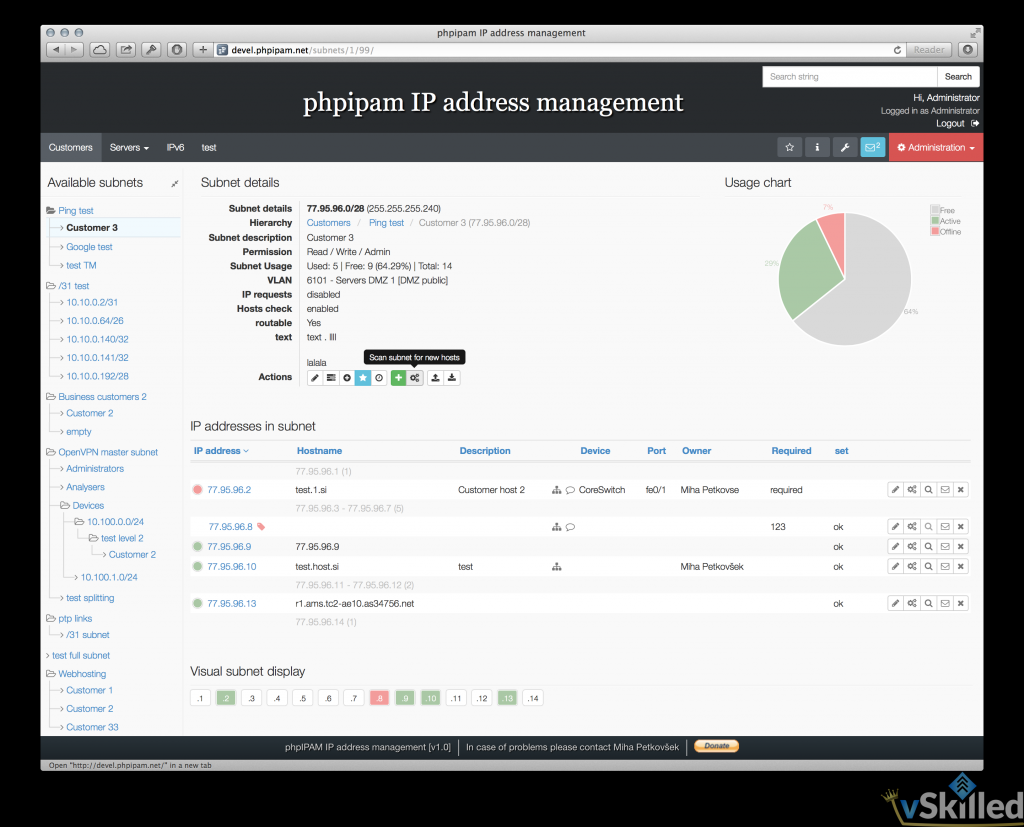Web-Based IP Address Management – phpIPAM
For those of you still using a spreadsheet for tracking IP addresses – it’s time to graduate! A couple of months ago I was looking around for free web based IPAM software. I wanted to be able to track the IP’s I have in use on my home/lab network and I also was consulting for a client that was looking for the same type of solution. There is quite the list of IPAM related software and many more unlisted options. Believe me – I looked and tried almost all of them (the free ones anyway).
When it came down to it, the ones that stood out were phpIPAM and GestióIP. After using both for a couple of weeks it was clear that phpIPAM was the winner. While both have different strengths and weaknesses – phpIPAM was both aesthetically pleasing and had the feature set I was looking for. At the time I was using version 0.9 of phpIPAM and since then they have released new versions which I was even more impressed with.
Full List of Features:
- IPv4 / IPv6 address management
- Domain authentication (AD) / OpenLDAP authentication
- Per-group permissions
- Multiple level of nested subnets
- Visual subnet display
- IPv4 / IPv6 address calculator
- VRF support
- VLAN management
- Device management
- RIPE import
- Import / export XLS files
- User management
- E-Mail notification with IP details
- IP database search
- IP request module
- IP range adding / editing / deleting
- Custom IP/subnet/userVLAN address fields
phpIPAM uses a clean bootstrap interface, includes LDAP support out of the box, has automatic host availability checks, and is very customizable. It’s very easy to get setup and I had it running on CentOS 6.5 LAMP server in a matter of minutes. I would highly recommend it for small to mid sized environments looking for a cost effective (free!) IPAM solution.
What IPAM software would you recommend? Let me know in the comments below!



Valdecir - Homelaber Brasil
I´m using phpIPAM too! It is the best open source option in the market. I´m planning to use the Microsoft IPAM Server that comes with Windows 2012.
I have a post about the phpIPAM setup on my blog, but it´s in Brazilian Portuguese.
Nice blog!
VC